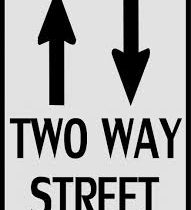How to Use the Elephant, the Rider, and the Path for Sales Training
Imagine you’re on safari in Africa, and instead of getting into a noisy off-road vehicle, you climb onto an elephant. You find you can send her forward with a squeeze of the legs, and turn her by pushing on her neck. Amazing, but you’re approaching a heavily wooded area and the elephant is slowing down.
Step by step, you and your wrinkled ride push into the forest. Twigs are snapping, leaves are brushing your face, and the air is getting heavy and humid. You’re starting to sweat.
The elephant is laboring, you’re almost in panic mode, and the path isn’t cooperating—but you’re focused on your destination and you’ve got people on the ground helping you. They’re slashing the jungle growth, and the elephant is moving faster, the ride is getting smoother, and you’re shouting encouragement.
This scenario explains how emotion, logic, and atmosphere affect the productivity of any person in the business world.
All of these concepts were detailed in “Switch: How to Change Things When Change is Hard,” by Chip and Dan Heath. The elephant represents your emotion, and the rider is the logical side of your mind. The path is your environment.
Changing how you approach and complete any difficult task isn’t easy—changing your team’s approach to generating leads and sales is no exception. This kind of change requires logic, emotion, and hard work.
It’s just like guiding that elephant through the forest.
Below, we’ll cover ways sales executives can maximize the contribution from inside sales by motivating the elephant, directing the rider, and shaping the path.
Wrinkled, gray and moving like molasses
Let’s start off with the elephant in the room, literally.
The elephant is your emotion, and it’s big, unwieldy, and subject to a host of outside forces. Moving your elephant requires motivation, and we’re not talking about giving her bushels of peanuts.
To motivate the elephant, focus on feelings. Not an easy task, but if you take the time, you can label each emotion and then concoct different methods of channeling them.
When it comes to the sales environment, that elephant might be a collection of emotions: fear, anxiety, and laziness. There’s no better example of the elephant’s impact on productivity than what we deem every sales team’s biggest competitor: “call avoidance,” or when salespeople organize their desk, check their email, and do just about everything except picking up the phone and making a call.
If you think about the emotions behind call avoidance, it’s easy to wipe it out. Dispel fear and anxiety with weekly trainings to build skills and confidence. Preclude laziness with early morning call blitzes. Pique desire by showing employees a clear path to making more money or advancing up the corporate ladder. After all, the fastest way to that plush CEO office is by making sales that drive the company!
When you emotionally motivate your sales team, the elephant’s brute strength will be on your side.
High up in the driver’s seat
Sitting atop this gray wrinkled pachyderm is the rider, or a person’s logic. The rider has to direct the elephant, but the key idea here is, “Who’s going to direct the rider?”
Because the rider is so logical, he immediately focuses on everything that’s not working. The call list is outdated, the phones aren’t working properly, and the product is too expensive, or too complicated.
The rider—the logical side of the mind—is creating an inner dialogue that’s not producing positive results. The elephant is making no headway, and frankly, the rider doesn’t care.
So here’s the secret to making the rider use his strengths – teach him how to ignore all of the things that aren’t working, and focus on what is working. For example, the software the rider is selling might be complicated, but users receive free training. Or the destination they’re headed to—in our case an alumni network of sales professionals at top tech firms—is compelling enough to justify hard work.
Another concept to consider is that logical thinking shines when it has a plan and tasks to attack. Provide your riders with actionable and immediate goals, such as generate a minimum of 3 hours of talk time today or talk with at least 15 prospects today. The rider will work to check off each task.
Once the rider sees what’s working and has a logical plan of attack, the elephant starts handling like a sports car instead of a cement truck.
The path of least resistance
The last player in this scenario is the environment, or the path. A clear, open path that lets in sunshine and cool winds makes the ride much more enjoyable.
The environment in a company’s inside sales department should be vibrant and charged with a positive feeling. Teamwork, competition and a sense of accomplishment drive everyone forward.
You can shape the path with relatively simple but effective methods. For example, we installed five white boards in our office. Every morning our most recently hired Inside Sales rep is responsible for updating the boards which rank everyone from first to worst in leads, talk time, and dials.
Visually we group performers into packs—the top third is green, middle third black, and bottom third red. This way, at a glance, everyone knows how they compare to their peers and if they’re pacing to hit their weekly and monthly goals. This creates a competitive environment, pushing everyone to do his or her best.
Another way to clear the path is to rally the herd. Nothing gets elephants moving in the right direction like a well-timed contest to create excitement and bring the team together.
When the path is easy to navigate, the productivity level rises. Building that path, and making it interesting and encouraging, creates successful, team-oriented sales departments.
In Conclusion: The Successful Sales Safari
Inside sales and lead generation are vital to the success of any company. Finding the right people and motivating them to perform is a full time endeavor.
Through moving the elephant, the rider, and the path, you’ll make your inside sales team—or any employee—more effective.
Now, it’s your turn—do you agree? How has your company motivated the elephant, directed the rider, or shaped the path? Comment and let us know!
If you’re interested in learning more about the memoryBlue approach to inside sales, download our free eBook, “Should You Insource or Outsource Inside Sales?”
Since cofounding memoryBlue in 2002, Chris has helped provide inside sales resources to more than 1,000 high tech companies, and has hired, placed, or evaluated thousands of high tech sales professionals. Chris spearheads memoryBlue recruiting services, and is passionate about developing sales talent that generates results.




